Yoonjin Won
EventFlow: Real-Time Neuromorphic Event-Driven Classification of Two-Phase Boiling Flow Regimes
Nov 07, 2025Abstract:Flow boiling is an efficient heat transfer mechanism capable of dissipating high heat loads with minimal temperature variation, making it an ideal thermal management method. However, sudden shifts between flow regimes can disrupt thermal performance and system reliability, highlighting the need for accurate and low-latency real-time monitoring. Conventional optical imaging methods are limited by high computational demands and insufficient temporal resolution, making them inadequate for capturing transient flow behavior. To address this, we propose a real-time framework based on signals from neuromorphic sensors for flow regime classification. Neuromorphic sensors detect changes in brightness at individual pixels, which typically correspond to motion at edges, enabling fast and efficient detection without full-frame reconstruction, providing event-based information. We develop five classification models using both traditional image data and event-based data, demonstrating that models leveraging event data outperform frame-based approaches due to their sensitivity to dynamic flow features. Among these models, the event-based long short-term memory model provides the best balance between accuracy and speed, achieving 97.6% classification accuracy with a processing time of 0.28 ms. Our asynchronous processing pipeline supports continuous, low-latency predictions and delivers stable output through a majority voting mechanisms, enabling reliable real-time feedback for experimental control and intelligent thermal management.
Data-Driven Optical To Thermal Inference in Pool Boiling Using Generative Adversarial Networks
May 01, 2025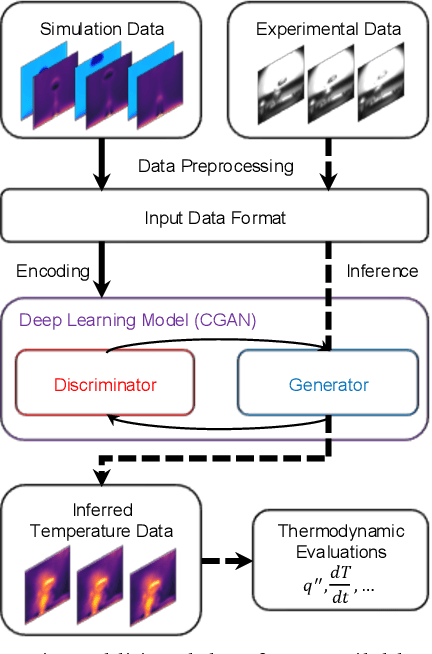
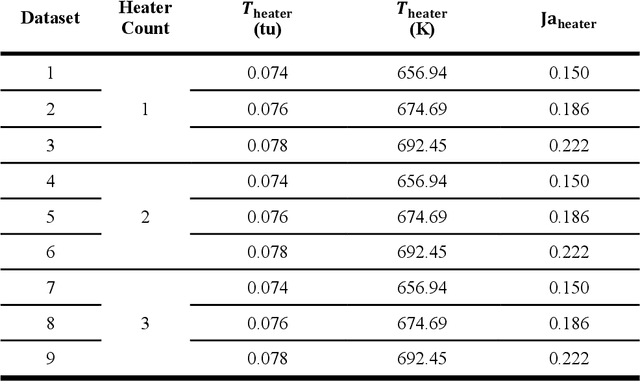
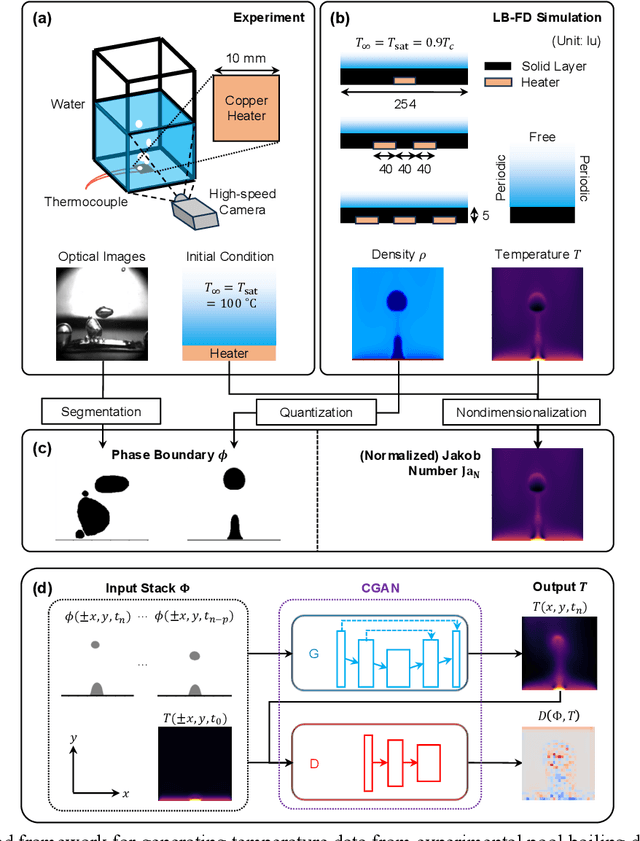

Abstract:Phase change plays a critical role in thermal management systems, yet quantitative characterization of multiphase heat transfer remains limited by the challenges of measuring temperature fields in chaotic, rapidly evolving flow regimes. While computational methods offer spatiotemporal resolution in idealized cases, replicating complex experimental conditions remains prohibitively difficult. Here, we present a data-driven framework that leverages a conditional generative adversarial network (CGAN) to infer temperature fields from geometric phase contours in a canonical pool boiling configuration where advanced data collection techniques are restricted. Using high-speed imaging data and simulation-informed training, our model demonstrates the ability to reconstruct temperature fields with errors below 6%. We further show that standard data augmentation strategies are effective in enhancing both accuracy and physical plausibility of the predicted maps across both simulation and experimental datasets when precise physical constraints are not applicable. Our results highlight the potential of deep generative models to bridge the gap between observable multiphase phenomena and underlying thermal transport, offering a powerful approach to augment and interpret experimental measurements in complex two-phase systems.
Multi-fidelity Design of Porous Microstructures for Thermofluidic Applications
Oct 27, 2023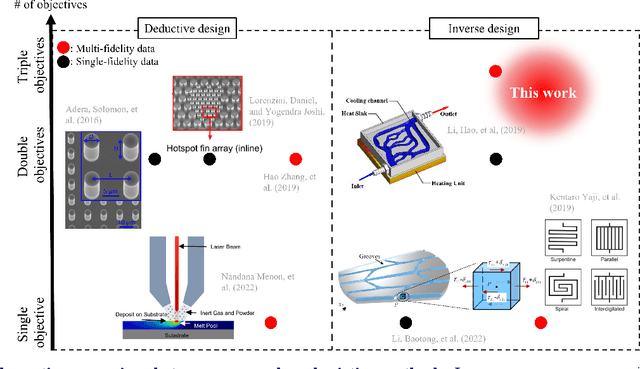
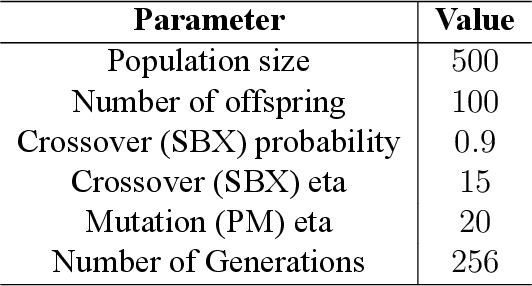
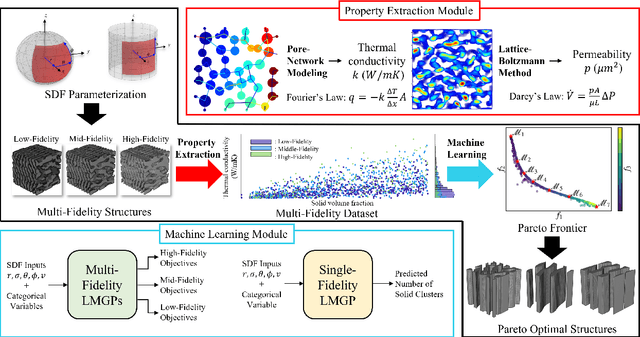

Abstract:As modern electronic devices are increasingly miniaturized and integrated, their performance relies more heavily on effective thermal management. Two-phase cooling methods enhanced by porous surfaces, which capitalize on thin-film evaporation atop structured porous surfaces, are emerging as potential solutions. In such porous structures, the optimum heat dissipation capacity relies on two competing objectives that depend on mass and heat transfer. The computational costs of evaluating these objectives, the high dimensionality of the design space which a voxelated microstructure representation, and the manufacturability constraints hinder the optimization process for thermal management. We address these challenges by developing a data-driven framework for designing optimal porous microstructures for cooling applications. In our framework we leverage spectral density functions (SDFs) to encode the design space via a handful of interpretable variables and, in turn, efficiently search it. We develop physics-based formulas to quantify the thermofluidic properties and feasibility of candidate designs via offline simulations. To decrease the reliance on expensive simulations, we generate multi-fidelity data and build emulators to find Pareto-optimal designs. We apply our approach to a canonical problem on evaporator wick design and obtain fin-like topologies in the optimal microstructures which are also characteristics often observed in industrial applications.
BubbleML: A Multi-Physics Dataset and Benchmarks for Machine Learning
Jul 27, 2023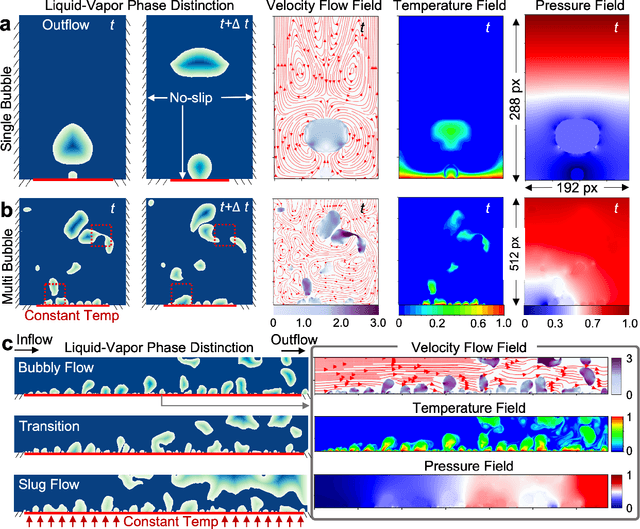



Abstract:In the field of phase change phenomena, the lack of accessible and diverse datasets suitable for machine learning (ML) training poses a significant challenge. Existing experimental datasets are often restricted, with limited availability and sparse ground truth data, impeding our understanding of this complex multi-physics phenomena. To bridge this gap, we present the BubbleML Dataset(https://github.com/HPCForge/BubbleML) which leverages physics-driven simulations to provide accurate ground truth information for various boiling scenarios, encompassing nucleate pool boiling, flow boiling, and sub-cooled boiling. This extensive dataset covers a wide range of parameters, including varying gravity conditions, flow rates, sub-cooling levels, and wall superheat, comprising 51 simulations. BubbleML is validated against experimental observations and trends, establishing it as an invaluable resource for ML research. Furthermore, we showcase its potential to facilitate exploration of diverse downstream tasks by introducing two benchmarks: (a) optical flow analysis to capture bubble dynamics, and (b) operator networks for learning temperature dynamics. The BubbleML dataset and its benchmarks serve as a catalyst for advancements in ML-driven research on multi-physics phase change phenomena, enabling the development and comparison of state-of-the-art techniques and models.
 Add to Chrome
Add to Chrome Add to Firefox
Add to Firefox Add to Edge
Add to Edge